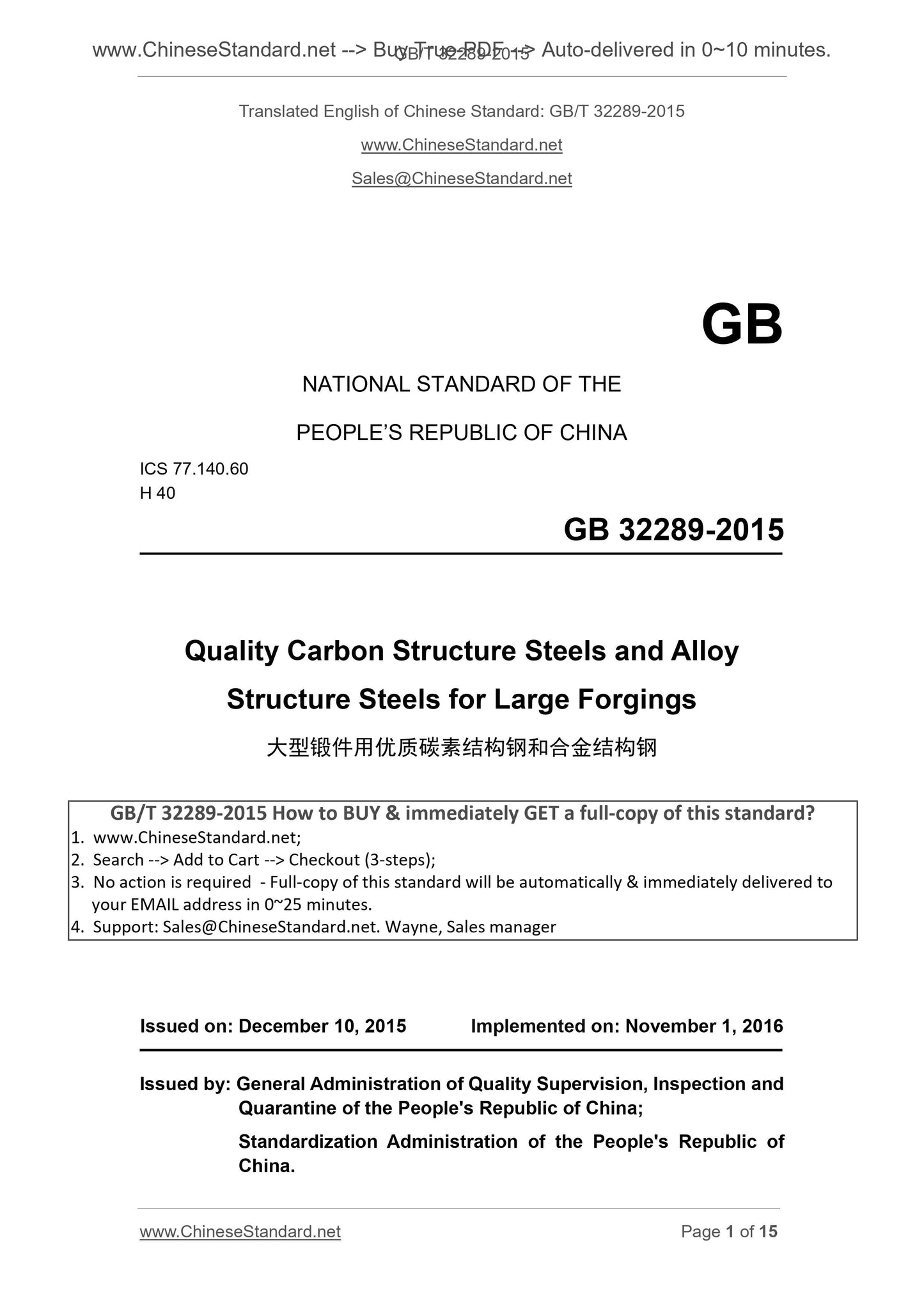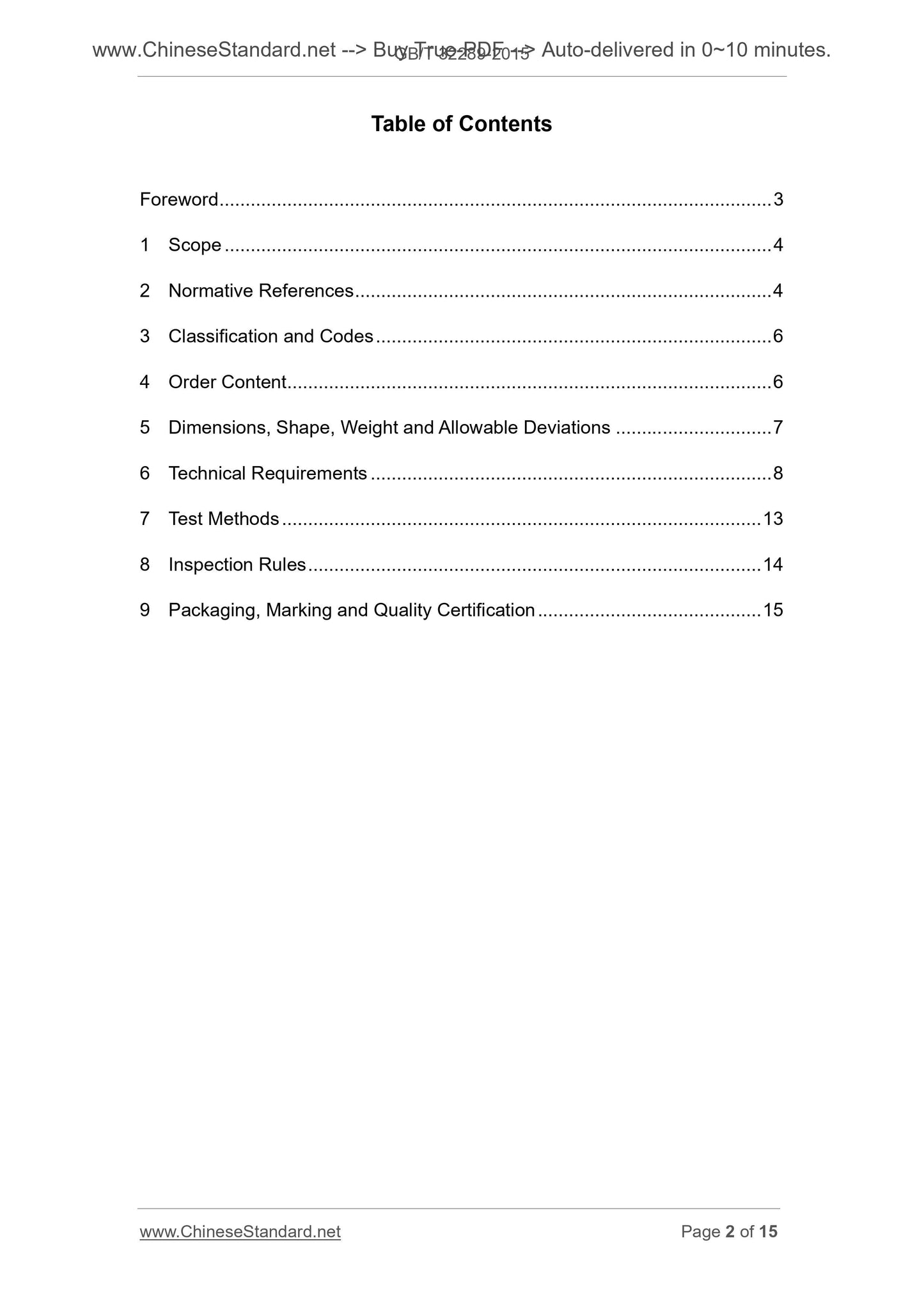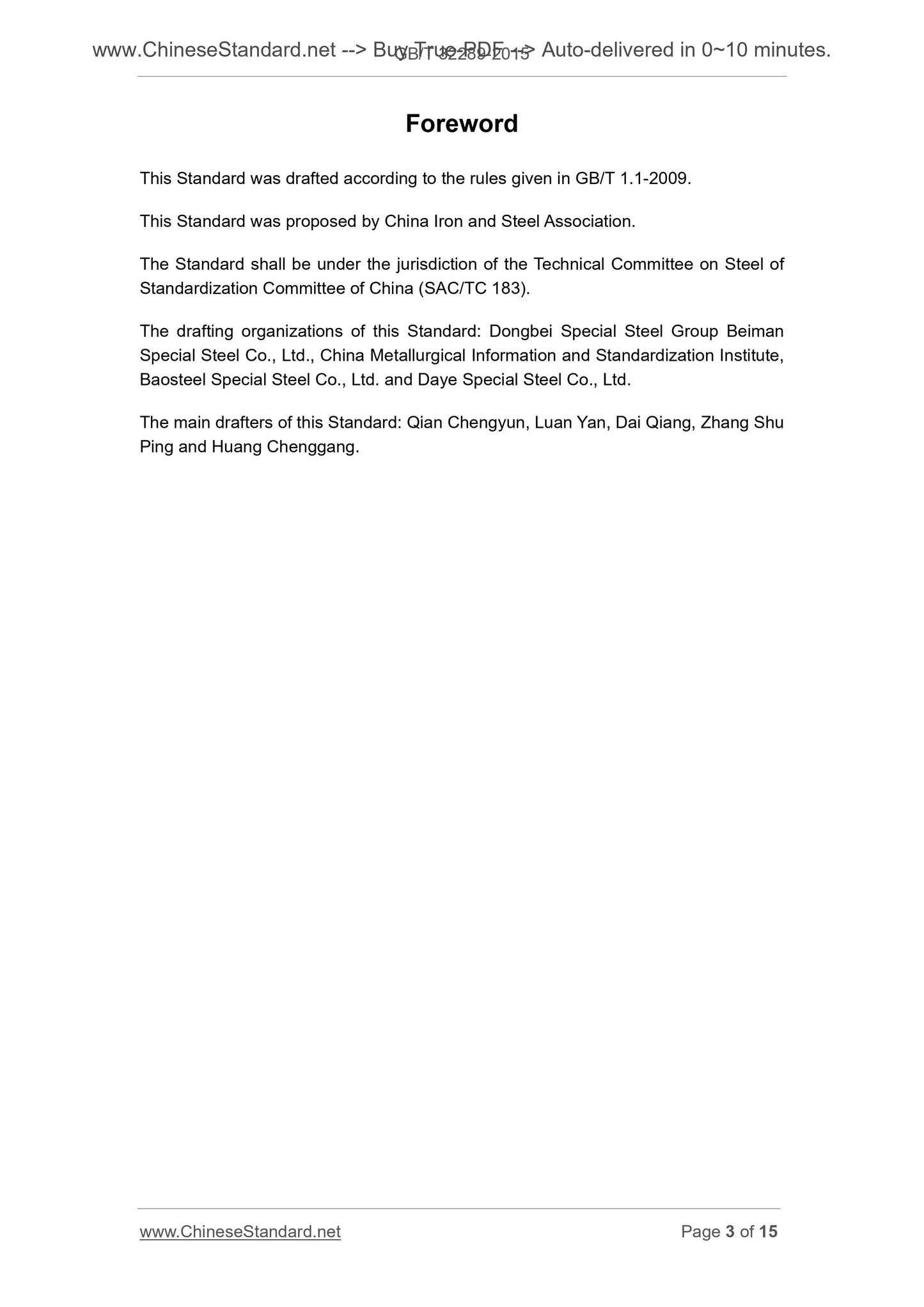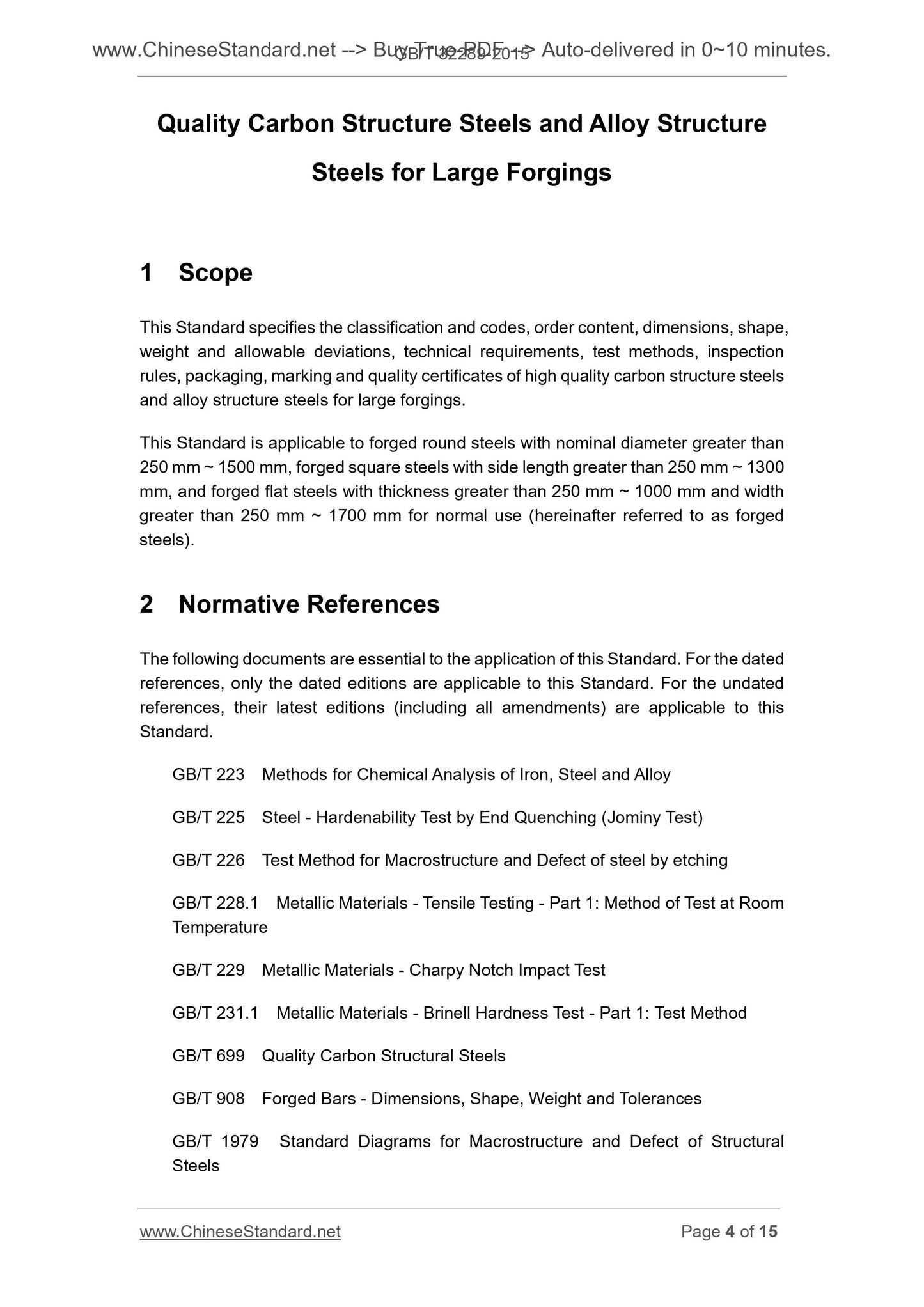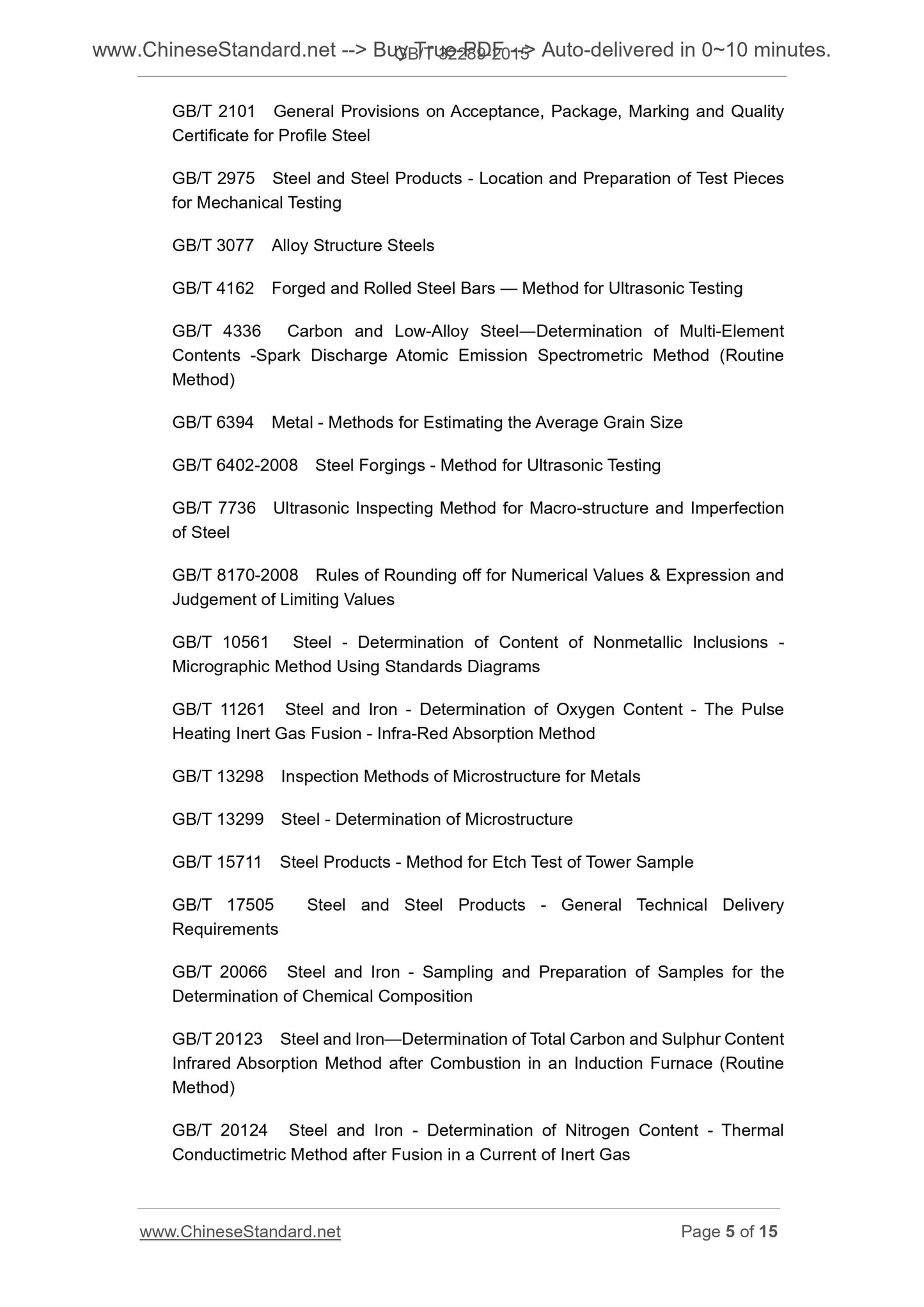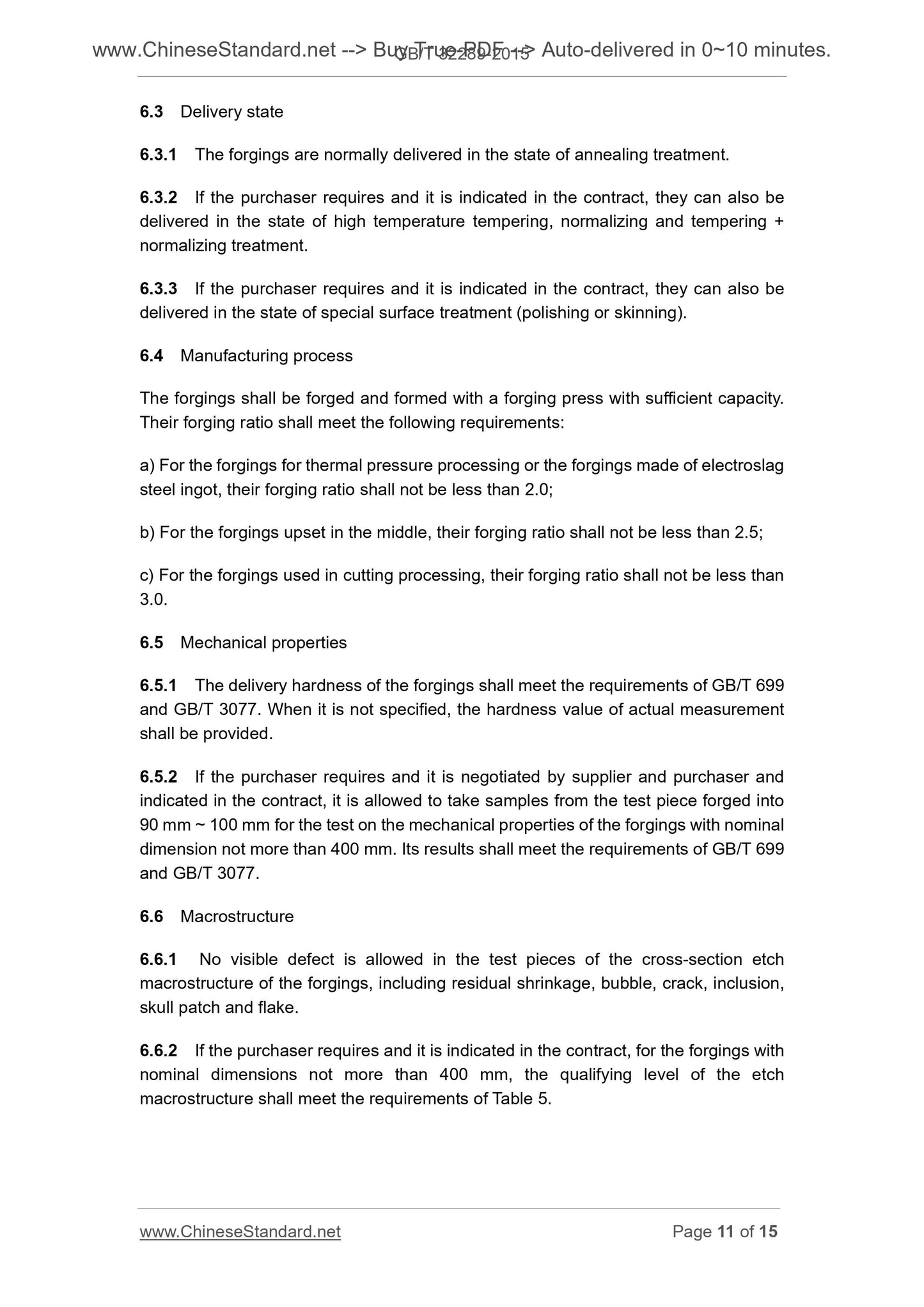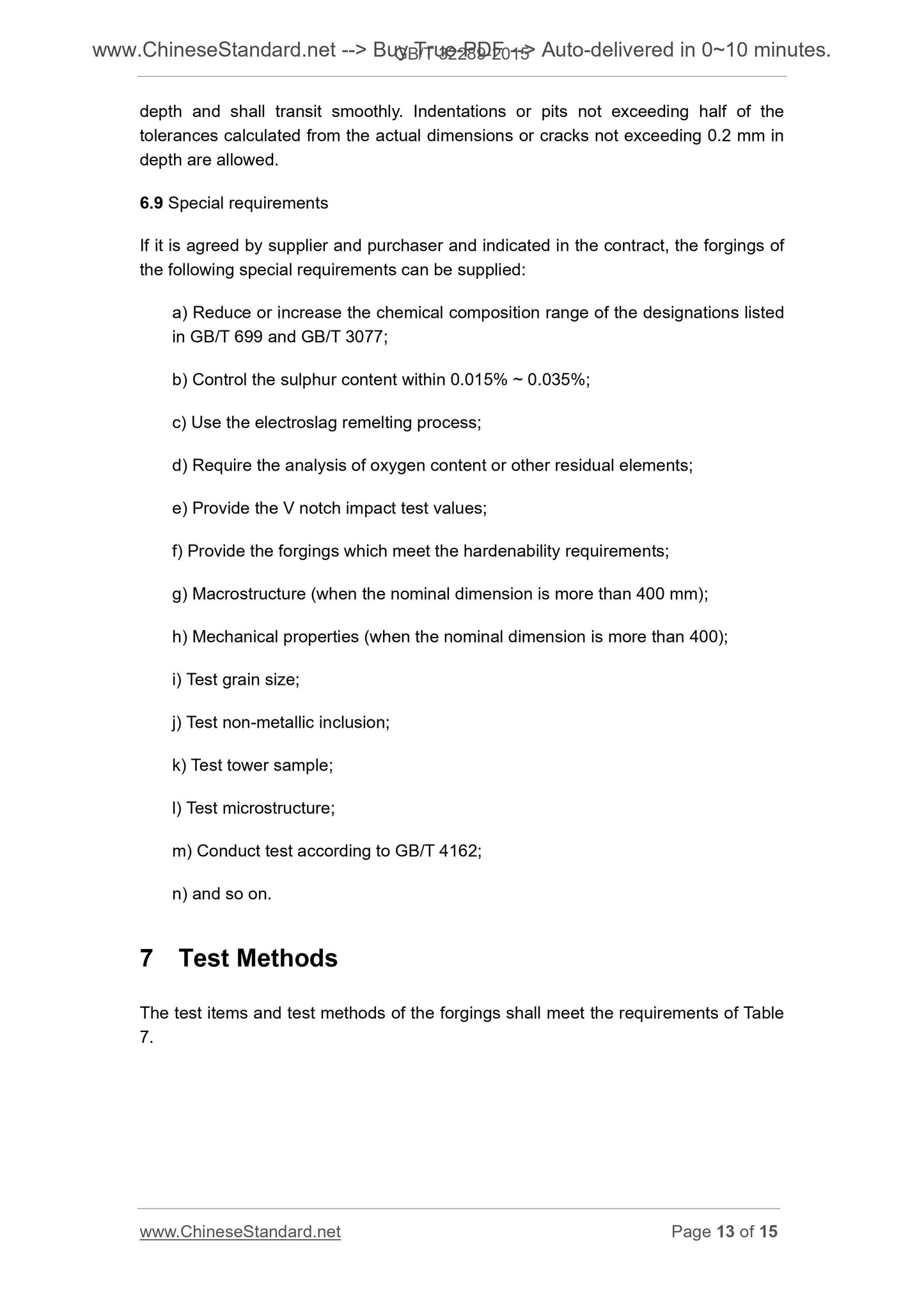1
/
of
7
www.ChineseStandard.us -- Field Test Asia Pte. Ltd.
GB/T 32289-2015 English PDF (GB/T32289-2015)
GB/T 32289-2015 English PDF (GB/T32289-2015)
Regular price
$90.00
Regular price
Sale price
$90.00
Unit price
/
per
Shipping calculated at checkout.
Couldn't load pickup availability
GB/T 32289-2015: Quality Carbon Structure Steels and Alloy Structure Steels for Large Forgings
Delivery: 9 seconds. Download (and Email) true-PDF + Invoice.Get Quotation: Click GB/T 32289-2015 (Self-service in 1-minute)
Newer / historical versions: GB/T 32289-2015
Preview True-PDF
Scope
This Standard specifies the classification and codes, order content, dimensions, shape,weight and allowable deviations, technical requirements, test methods, inspection
rules, packaging, marking and quality certificates of high quality carbon structure steels
and alloy structure steels for large forgings.
This Standard is applicable to forged round steels with nominal diameter greater than
250 mm ~ 1500 mm, forged square steels with side length greater than 250 mm ~ 1300
mm, and forged flat steels with thickness greater than 250 mm ~ 1000 mm and width
greater than 250 mm ~ 1700 mm for normal use (hereinafter referred to as forged
steels).
Basic Data
| Standard ID | GB/T 32289-2015 (GB/T32289-2015) |
| Description (Translated English) | Quality Carbon Structure Steels and Alloy Structure Steels for Large Forgings |
| Sector / Industry | National Standard (Recommended) |
| Classification of Chinese Standard | H40 |
| Classification of International Standard | 77.140.60 |
| Word Count Estimation | 11,122 |
| Date of Issue | 2015-12-10 |
| Date of Implementation | 2016-11-01 |
| Regulation (derived from) | National Standard Announcement 2015 No.38 |
| Issuing agency(ies) | General Administration of Quality Supervision, Inspection and Quarantine of the People's Republic of China, Standardization Administration of the People's Republic of China |
Share
